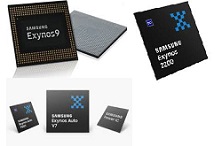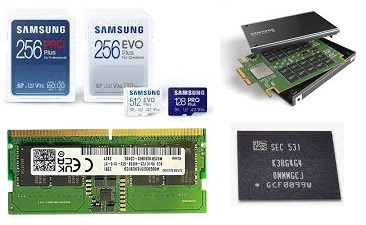Samsung Electronics Co., Ltd
Samsung Electronics Co., Ltd. inspires the world and shapes the future with transformative ideas and technologies, redefining the worlds of TVs, smartphones, wearable devices, tablets, cameras, digital appliances, printers, medical equipment, network systems, and semiconductor and LED solutions.
 Samsung Semiconductor's business aims to achieve excellence as a long life, energy saving and eco-friendly light source supplier in displays and lighting applications. Samsung's advanced semiconductor manufacturing expertise serves as a strong foundation to deliver state-of-the-art LED devices. Samsung offers LED based lighting solutions in the form of back light units in display panels, exterior and dashboard lighting in automotives, lighting packages and engines with and without integrated optics, and drivers.
Samsung Semiconductor's business aims to achieve excellence as a long life, energy saving and eco-friendly light source supplier in displays and lighting applications. Samsung's advanced semiconductor manufacturing expertise serves as a strong foundation to deliver state-of-the-art LED devices. Samsung offers LED based lighting solutions in the form of back light units in display panels, exterior and dashboard lighting in automotives, lighting packages and engines with and without integrated optics, and drivers.
Samsung Semiconductors
 Samsung's semiconductor revenue was at 28.62 billion U.S. dollars. In 2015, Samsung was one of the top 20 semiconductor companies worldwide.
Samsung's semiconductor revenue was at 28.62 billion U.S. dollars. In 2015, Samsung was one of the top 20 semiconductor companies worldwide.
Through aggressive business strategies and consistent investments, Samsung achieved and has maintained its market leadership position in memory industry since 1993. Along with its success in memory sector, the company signaled a long commitment to logic and analog chip development in 2001 with the expansion of its System LSI organization and the opening of its SoC Research Lab. Originally initiated as a 50:50 venture between Samsung Electro-Mechanics and Samsung Electronics in 2009, Samsung's LED Business has recently merged into the component arm of Samsung Electronics. The new transition was designed to raise efficiency and competitiveness by taking advantage of synergies across the existing component businesses and thus to achieve leadership as a light source supplier in displays and lighting applications.
Samsung has long been a major manufacturer of electronic components such as lithium-ion batteries, semiconductors, chips, flash memory and hard drive devices for clients such as Apple, Sony, HTC and Nokia.
Samsung Electronics' semiconductor operations have long been at the forefront of innovation and with the new America headquarters, Samsung's R&D efforts will be bolstered substantially. Innovation and advanced technologies for next-generation devices generated at the new facility will help make an even greater contribution to providing the critical competitive advantages that the company's U.S. and global customers seek.
 SAMSUNG is the world's largest memory chip manufacturer and, from 2017 to 2018, had been the largest semiconductor company in the world, briefly dethroning Intel, the decades-long champion. Since the early 1990s, SAMSUNG Electronics has commercially introduced a number of new memory technologies. SAMSUNG commercially introduced SDRAM in 1992, and later DDR SDRAM and GDDR SGRAM in 1998. In 2009, SAMSUNG started mass-producing 30 nm-class NAND flash memory, and in 2010 succeeded in mass-producing 30 nm class DRAM and 20 nm class NAND flash, both of which were for the first time in the world. In the second quarter of 2020 subject to market conditions, SAMSUNG is planning to start mass production of 5 nm chips using Extreme ultraviolet lithography (EUV) and aims to become a leader in EUV process use...
SAMSUNG is the world's largest memory chip manufacturer and, from 2017 to 2018, had been the largest semiconductor company in the world, briefly dethroning Intel, the decades-long champion. Since the early 1990s, SAMSUNG Electronics has commercially introduced a number of new memory technologies. SAMSUNG commercially introduced SDRAM in 1992, and later DDR SDRAM and GDDR SGRAM in 1998. In 2009, SAMSUNG started mass-producing 30 nm-class NAND flash memory, and in 2010 succeeded in mass-producing 30 nm class DRAM and 20 nm class NAND flash, both of which were for the first time in the world. In the second quarter of 2020 subject to market conditions, SAMSUNG is planning to start mass production of 5 nm chips using Extreme ultraviolet lithography (EUV) and aims to become a leader in EUV process use...